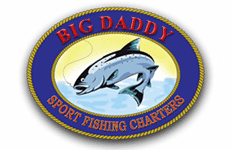King Salmon
The Chinook Salmon was introduced into the Lake Michigan in 1967. Sometimes called "King Salmon", these fish were not known to reproduce successfully. In 2007, the DNR of Lake Michigan's bordering states Wisconsin, Illinois, Indiana and Michigan, began studying natural recruitment of the King Salmon. It is now found that nearly 54 percent of the annual king salmon catch is naturally reproduced. Great Lakes populations of Chinook are still supplemented by annual stocking programs, but the numbers stocked have been reduced considerably to maintain a thriving predator to prey population.
Chinook Salmon spawn in streams over beds of large gravel, near riffles. Within two weeks after spawning, adult chinook die. Chinook compete with other salmon and trout for scarce spawning grounds. The following spring the eggs hatch, and the young usually remain in the river for one year before they migrate down to the lake. Once in the lake, males tend to remain for 1-2 years and females for 3-4 years. The King Salmon average a weight of 15 to 25 pounds and 38 inches in length.
Young chinook in rivers eat insects, insect larvae and crustaceans; adults in the lakes eat fish almost exclusively. In the Great Lakes, smelt and alewives make up their main diet. Predators include rainbow trout, coho salmon smolts and fish-eating birds. The young also compete with trout and other salmon for food. Anglers prize chinook partly because of their large size and the challenge they present for fishing, and partly because they make a delicious meal. While other pacific salmon species have red flesh, chinook meat is often light pink.
Chinook Salmon
Oncorhynchus tshawytscha
Identifying characteristics: (Non-Native Fish) Two dorsal fins including one adipose fin, inside the mouth and gums, black, small spots on upper back and tail, 15 – 17 rays in anal fin.
The salmon family, or Salmonidae, includes the salmon, trout, and whitefishes. All are characterized by adipose fin, and have a preference for cold water with a high oxygen content, making the Great Lakes an ideal habitat.
